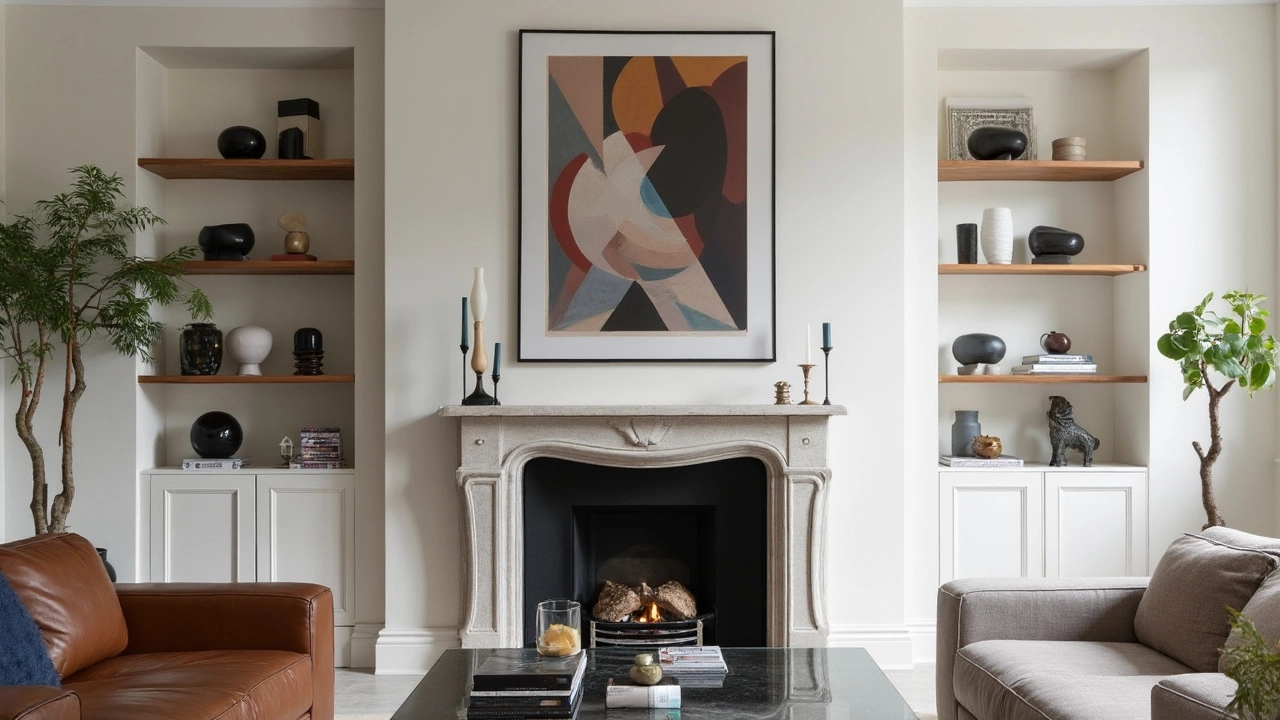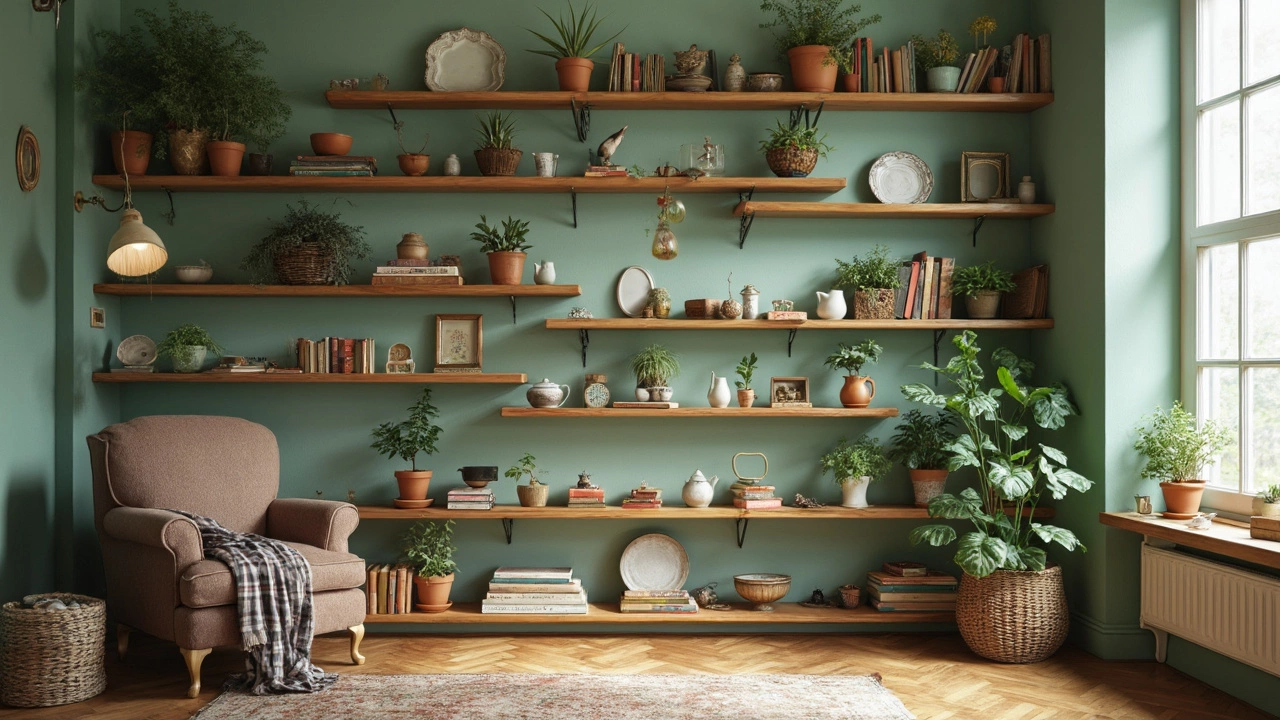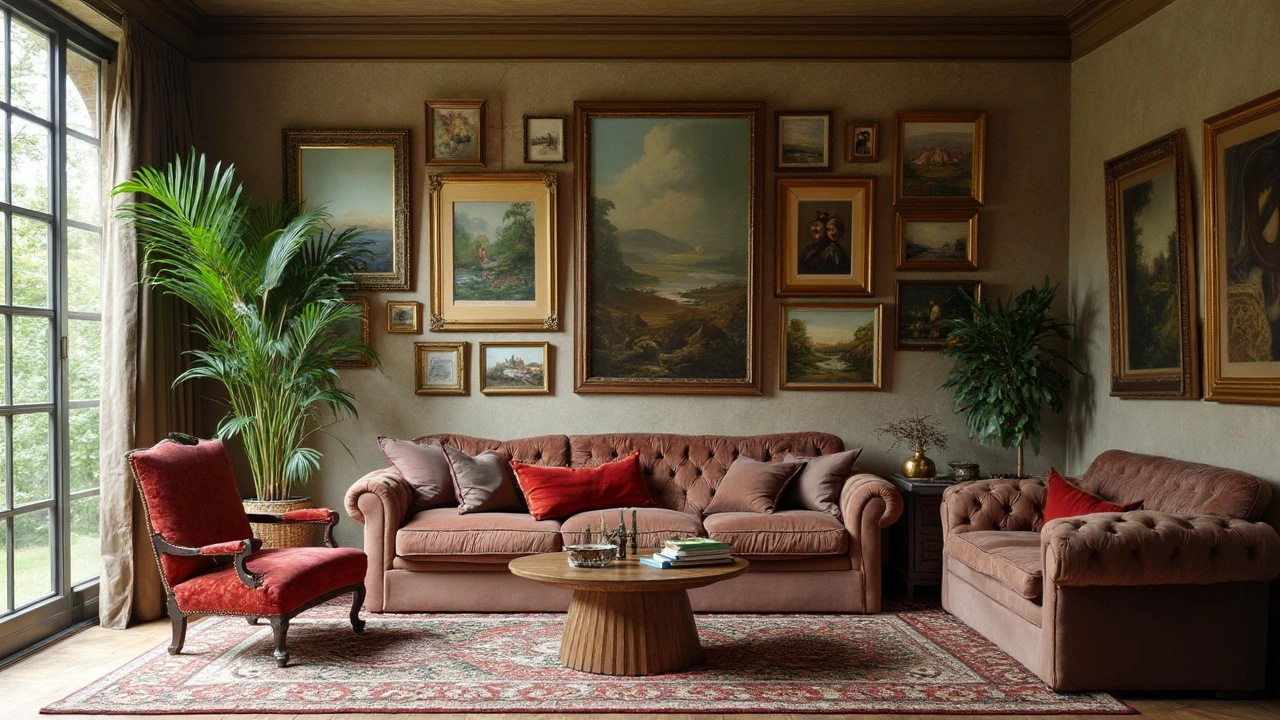Staring at those bare walls in your living room, wondering what to do with them? You're not alone! It’s a common dilemma, but thankfully, the options are more exciting than ever. Your living room walls are a blank canvas just begging for some creativity. Whether you’re an art aficionado or just someone who loves a cozy vibe, there’s something for everyone.
First up, think about your style. Are you into bold and modern, or do you lean towards classical and serene? The right art can make a huge difference. Large, statement pieces can add drama and focus, while smaller, more detailed works can create a cozy, inviting atmosphere. Mixing big and small can be interesting, too.
- Choosing the Right Art Style
- Incorporating Personal Touches
- Playing with Sizes and Dimensions
- Mixing Different Types of Wall Decor
- Practical Tips for Arranging Wall Art
Choosing the Right Art Style
Choosing the right art for your living room walls isn’t just about slapping something up there and hoping for the best. It’s more about how the art fits in with your overall vibe and what statement you're trying to make. You want your living room to reflect your personality, so keep that in mind when selecting pieces.
The tricky part often lies in balancing your personal taste with what's trendy. Contemporary art can breathe life and color into a modern space, while abstract art offers more freedom and can spark some interesting conversations. Meanwhile, landscapes and portraiture provide a more classic look, making it easier for people to connect with the imagery.
"Art should reflect who you are, where you've been, and where you want to go." — Sarah Richardson, Interior Designer
Think about how you feel in different spaces. A bold piece can energize a room, while something more muted and classic can bring calmness. This decision-making process is so important because it dictates how your space feels as a whole.
If you're struggling with choices, here are some tips:
- Gallery walls: A mixed arrangement of smaller pieces might do the trick. It’s perfect if you like a bit of everything or want to display a collection.
- Oversized art: This trend involves single pieces that make a statement and can function as a central focal point.
- Photography: Offers a personal touch when combined with meaningful subjects or places.
If numbers get you excited, a survey showed that 60% of homeowners choose art based on color and emotional connection. It’s clear — emotions play a strong role in how we decorate our homes.
The key takeaway? Don’t rush. Choose something that genuinely resonates with you, and fits the space both in scale and sentiment.
Incorporating Personal Touches
Your living room is probably the heart of your home, right? So, why not make it scream 'you'? Adding personal touches to your living room wall art is a fantastic way to do that. You can start by using family photos or mementos from trips. Not only do they add character, but also make your space distinctly yours.
Consider creating a gallery wall specifically designed to highlight your unique flair. Mix in framed photos alongside quirky finds, like vintage signs or your kid's artwork. Not having to follow traditional art rules gives you freedom. It’s all about making it personal and meaningful.
If you’re one for textures, don't ignore tapestries or quilts! They can add warmth and color, showcasing personal history or cultural interest. Remember that wall decor doesn't have to be flat—think of hanging a cool hat collection or a couple of guitars if you’re a music enthusiast.
For those who like to host gatherings, incorporating magnetic or chalk boards on your walls can be practical and fun. It gives your guests a chance to leave little messages or drawings during parties, adding an interactive element to your decor.
While setting it all up, involve family members. It’s a great way to ensure everyone feels connected to the look of the room. Plus, who knows, they might come up with cool decoration ideas you haven’t thought of yet!

Playing with Sizes and Dimensions
Imagine walking into a living room where the wall art makes you stop and say, "Wow!" That kind of reaction is often achieved by cleverly playing with sizes and dimensions. It’s not just about hanging a painting or print—it's about creating visual interest.
Start with one oversized piece if you want to make a bold statement. It can define the room's tone and color scheme. Think about the TV wall. Oversized art above or beside it can create a balance, especially if it aligns with the width of the TV. This way, the art becomes part of the whole entertainment setup rather than getting overshadowed.
If you’re more into a collective style, consider a gallery wall. Mixing various sizes can create a cohesive look. It’s like a puzzle where different-sized pieces come together to form a beautiful picture. You could combine modern wall decor, family photos, and favorite art prints. The key is to maintain a balance without overcrowding.
Don’t forget to play with dimensions, too. You could mix flat art with 3D objects like sculptures or hanging plants. This not only adds depth but also keeps the eye moving around the room. Hanging shelves with small, curated items can add another layer of dimension and break the monotony of flat surfaces.
Here’s a quick tip: always keep some blank space around your art. This negative space helps accentuate the piece and prevents the wall from looking cluttered. A good practical rule is to leave about two to three inches between frames if you're creating a gallery wall. This spacing makes everything look intentional and organized.
Mixing Different Types of Wall Decor
Want to give your living room that 'wow' factor? Mixing different types of wall decor is your go-to move. It's like creating a masterpiece of your personal interests and tastes, making the place uniquely yours. Instead of sticking to just paintings or photos, shake things up a bit.
Start by incorporating a series of framed artworks, which could include family photos, abstract pieces, or classic prints. But don’t stop there! Add in some mirrors to play with light and space. Mirrors not only make your living room feel bigger but also bring a touch of elegance.
A cool trend right now is mixing artwork with practical elements like shelves. Shelves aren't just for holding knick-knacks—they can showcase small sculptures or plants. This mix of decor adds layers and depth to your walls.
Check out wall hangers and textures! Textiles like woven wall hangings or macramé introduce a cozy, tactile element. You can even play around with wall clocks or hang a guitar if you’re musically inclined. The key is contrast; pairing different types of materials and styles make the room dynamic and interesting.
For a quick win, try creating a gallery wall. Combine different frames and art styles for an eclectic look. Just make sure there's some theme tying it all together, like a color palette or a common subject matter. It's all about creating visual harmony while keeping things fresh.
- Start with a focal piece and build around it.
- Use a variety of frame styles for a layered look.
- Consider the wall height when placing items.
- Use removable hooks for easy adjustments.
Mixing it up isn't just eye-catching—it's a reflection of who you are. Dive into this decorating adventure and watch your walls transform from blank spaces into a medley of your personality and style.

Practical Tips for Arranging Wall Art
Arranging living room wall art can seem a bit overwhelming at first, but with a few practical tips, you can turn it into a fun project. The first rule? Avoid clutter. Too many things on the wall can feel chaotic. Instead, opt for a balanced look.
A handy guideline is the 'centered at eye-level' trick. If you hang your art so the center is about 57 inches from the floor, it's likely at the perfect height for most people. And if you're hanging multiple pieces, treat them as one unit.
Also, think about the spacing between each piece. A good rule of thumb is to leave about 2 to 3 inches between smaller pieces. For larger artworks, 4 to 6 inches feels right.
Ever thought about creating a gallery wall? It's a great way to mix different styles. But fair warning—pick a theme or color scheme to keep it cohesive. As designer Nate Berkus says,
"Your home should tell the story of who you are, and be a collection of what you love."So go for a mix of photos, paintings, and even mirrors that resonate with you.
- Start with the largest piece or the anchor piece and build around it.
- Use painter's tape to map out a layout on the wall before committing to nails or hooks.
- If unsure about matching frames, a classic black or white frame never fails to look chic.
Don’t forget about lighting—it’s underrated! Consider adding a spotlight or perhaps some subtle LED strips to enhance the look. This small touch can make your wall decoration pop, especially in the evening.
In case you're into numbers, here's a quick size guide to plan your space:
| Artwork Size | Ideal Wall Width |
|---|---|
| Small (Less than 24") | Ideal for narrow walls |
| Medium (24" - 36") | Fits most spaces comfortably |
| Large (37" - 48") | Best for wide walls or above furniture |
Turn the humble wall into a showcase of your taste without breaking the bank. Trust me, once you get the hang of it, there’s no going back to plain walls!
